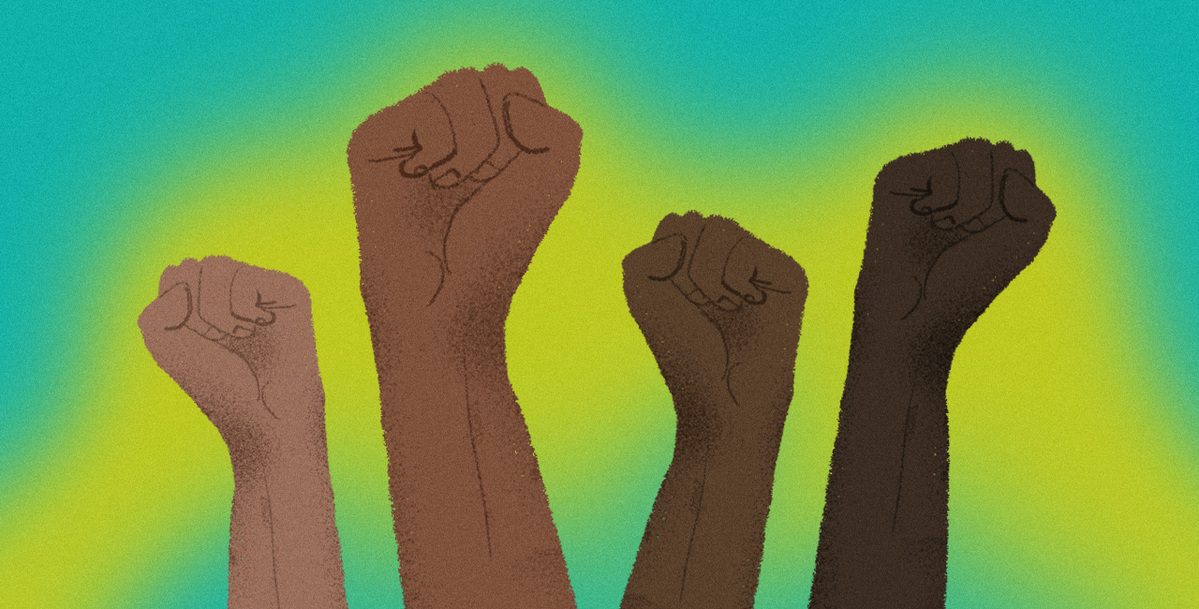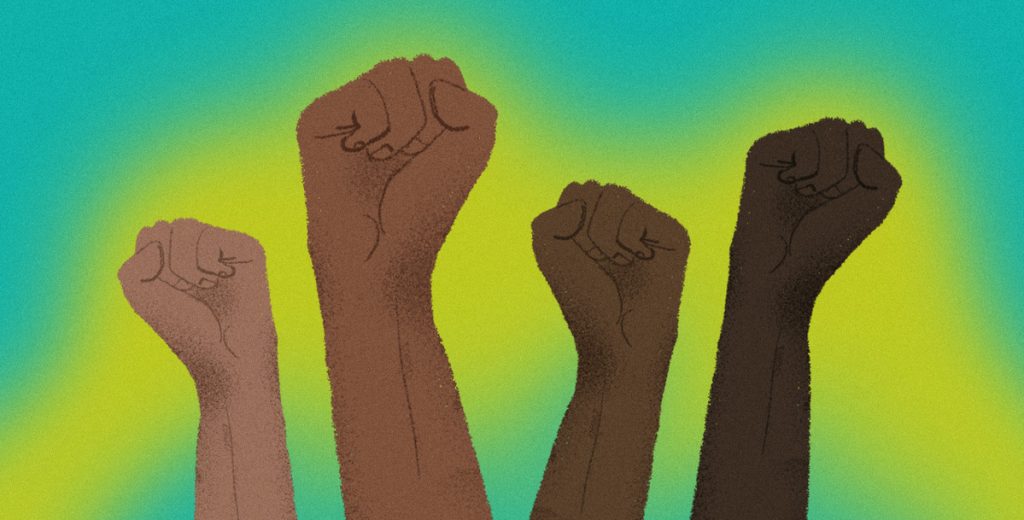Racism isn’t a new issue but in the wake of Black Lives Matter protests, more people are openly discussing the subject for the first time. While many adults are struggling to find the right words or confront their own ignorance, many also carry the responsibility to have these conversations with their children to ensure they are aware and knowledgeable. As parents and adults navigate the various ways to approach such a heavy topic, we felt this guide would be a helpful resource. We spoke with Afro-Latina authors, educators and mothers Jasminne Mendez and Sulma Arzu-Brown to compile helpful resources and advice on how to help the younger generation.
“It’s going to take time with ourselves, with our communities, with our children, politicians, coworkers, family members and colleagues to undo what is so ingrained in most of us,” Mendez tells Remezcla. “I hope that as everyone seeks out Black books, Black actors/actresses, Black anything that it is not just a ‘trend’ that passes next month or next year but that we all continue to seek out, properly compensate and recognize all that the Black community has and can offer. That we all find ways to amplify and listen to not just our traumas and our pain but also our joys, our trivialities, our everydayness, the full complexity of our human experience.”
Here are five ways to discuss racism, and teach children how to be active advocates in the fight against it.
1

Make it a point to point to discuss the history of Afro-Latinx and African American contributions throughout history. “We cannot erase our history. We cannot erase our bloodline. Doing so on purpose is a disrespect to the sacrifices of our ancestors. We must honor them by showing progress,” Arzu-Brown tells Remezcla. The mother of two (ages 9 and 15) shares that her mother came to the United States because she was told by her white boss that he could not give her a promotion because of her skin color. Arzu-Brown is Garifuna, a term used to identify the Afro-Indigenous community from the Caribbean that exiled to Honduras where she’s from. She shares that her mother didn’t know the history of their people so she learned it and shared it with her mother and encourages other parents to pass on their history as well.
“Teach children their story, tell them where they come from. It gives them power to keep the good, fix the challenges of the bad and never repeat the ugly.”
2

“Rather than focus on how we’ve been erased, let’s show them the joys, accomplishments and contributions of Black Latinx both in the US and abroad,” Mendez tells Remezcla emphasizing how understanding the Transatlantic slave trade is integral to helping kids understand the history of Black Latinx in the Americas. She suggests Forged Ed and Teaching Tolerance as online resources for education and curriculum building. She also recommends Helping Kids Rise and We Need Diverse Books for parents and teachers alike.
“Open up dialogue and allow children to express themselves and share their thoughts and beliefs in a safe space and work on reframing those beliefs again through books, movies, discussions, journaling, writing and discussions with others who have different lived experiences than they do,” Mendez says.
3

Meanwhile Arzu-Brown recommends approaching the conversation with love, as the subject is loaded with other emotions like anger, fear and frustration which can make it difficult. “To speak about racism to children, I believe it is important for each of us to understand and internally confront what racism produces inside of us. Conversing with children must come after you come to an agreement with yourself that love will lead. Together with your child, work on proactive and productive ways to help eliminate it.” She suggests having them bring books to school and for parents to ask to read them to the faculty and students. Arzu-Brown is the author of “My Hair Comes With Me… Shifting the Paradigm of What Success Looks Like” and “Pelo Malo No Existe/Bad Hair Doesn’t Exist,” that latter is an empowering story that highlights the beauty of Afro-Latinx hair textures and dismantles the stigma of “pelo malo.” ”
My Hair Comes With Me” features a variety of professions young women of color can aspire to in STEM fields along with the arts, education, and media that also intentionally includes LGBTQ+, people with disabilities and faith-based communities.
Other Afro-Latina authors with young adult books include Elizabeth Acevedo, Naima Coster, and Veronica Chambers and Afro-Latinx children’s book authors include Cozbi A. Cabrera, Sherry Smith, and Dania Peguero.
“There is power that comes with understanding your culture, your history,” Arzu-Brown says.
“My hope is to give children of all ages permission to be proud of every aspect of themselves. The magic happens when every life I touch discovers how cool differences are and in that discovery find out how much we each have in common. We all start to connect which often leads to respect and friendship.”
4

Growing up in the South as the daughter of Dominican immigrants, Mendez was often told that she was not Black. Now, she’s opening up about the process of unlearning. “I am constantly reading, thinking about and learning more about the impact of institutionalized and systemic racism, my own privilege as a lighter-skinned Afro-Latina and even my own identity labels and why I even choose to say I’m Afro-Latina vs. Black—an identity label I just now in my 30s feel comfortable using.”
Mendez shares that 95% of the books she reads to her two-year-old daughter are by writers of color or feature BIPOC characters. She didn’t grow up seeing characters that looked like her in books or reading bilingual books. “This matters,” she asserts. “Representation in film, books and all media matters.”
She recalls desiring to be white and have brown or blonde straight hair because it’s all she was surrounded by. Now, she’s making sure that isn’t the case for her daughter. She even checks and calls out her own family members whenever they say something like “your daughter has good hair,” she says, because while that seems like a compliment, she says it’s really just an underhanded insult to “others like me.” Mendez recently bought her daughter her first Black doll and is going to make sure she is surrounded by dolls, toys, and books that resemble her own reflection “so she knows she is beautiful and worthy and loved.”
5

“You can say, ‘listen, sometimes groups of people are often overlooked, silenced and ignored, why do you think that is? When have you felt that way?’ And then that leads to a conversation around empathy and understanding,” Mendez shares about opening up the discussion with a group of children/students. “There are so many resources out there that now there is no excuse for everyone to know that Black Latinx folks exist and we have made a substantial impact on society.”
Encouraging kids to be proactive about what they’re taught in school is empowering and allows them to vocalize their concerns and/or contribute to expanding their curriculum in various ways depending on their age. While the responsibility ultimately lies on the adults to implement change in schools, encouraging kids to be open and aware of diversity provides them with the capacity to identify when there’s a lack of it.
“Our children need us to be proactive in making this world more accepting of all humanity,” Arzu-Brown says. She’s partnered with other Black self-published authors to create an outreach plan and introduce white children to Black stories from their perspective, and she hopes to work with predominantly white institutions to do so, “because it is not fair for any child to learn about racism through 8 minutes and 46 seconds of video cam footage of murder.”




